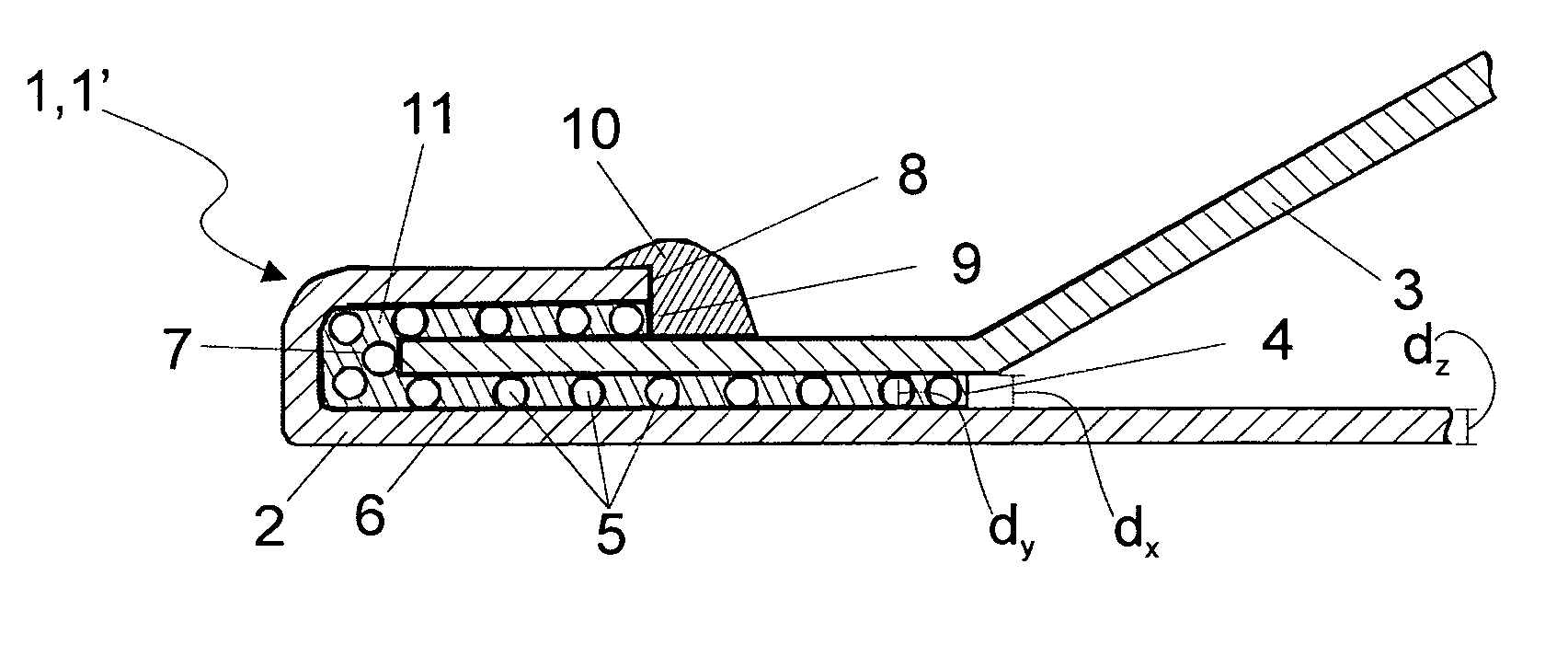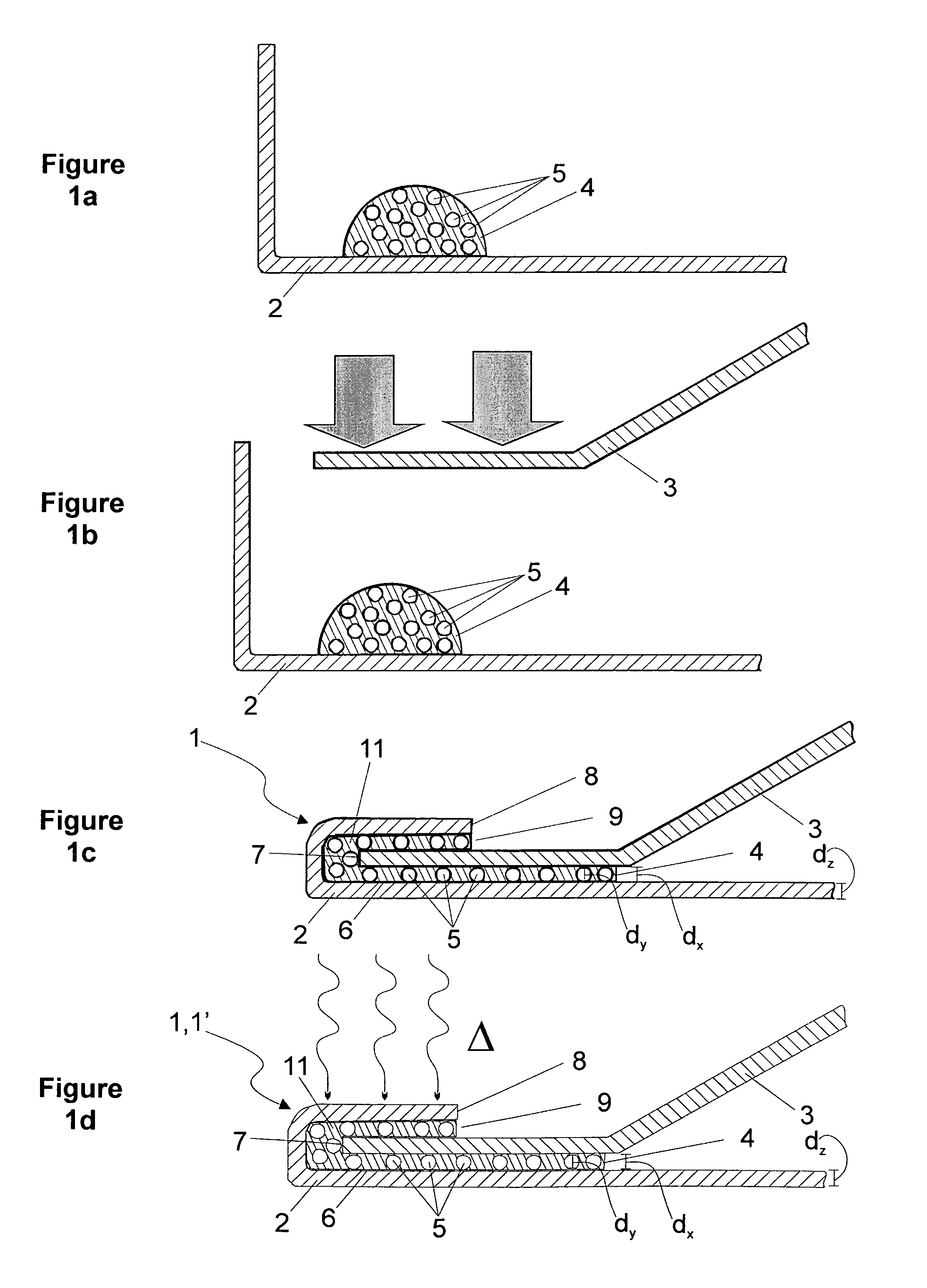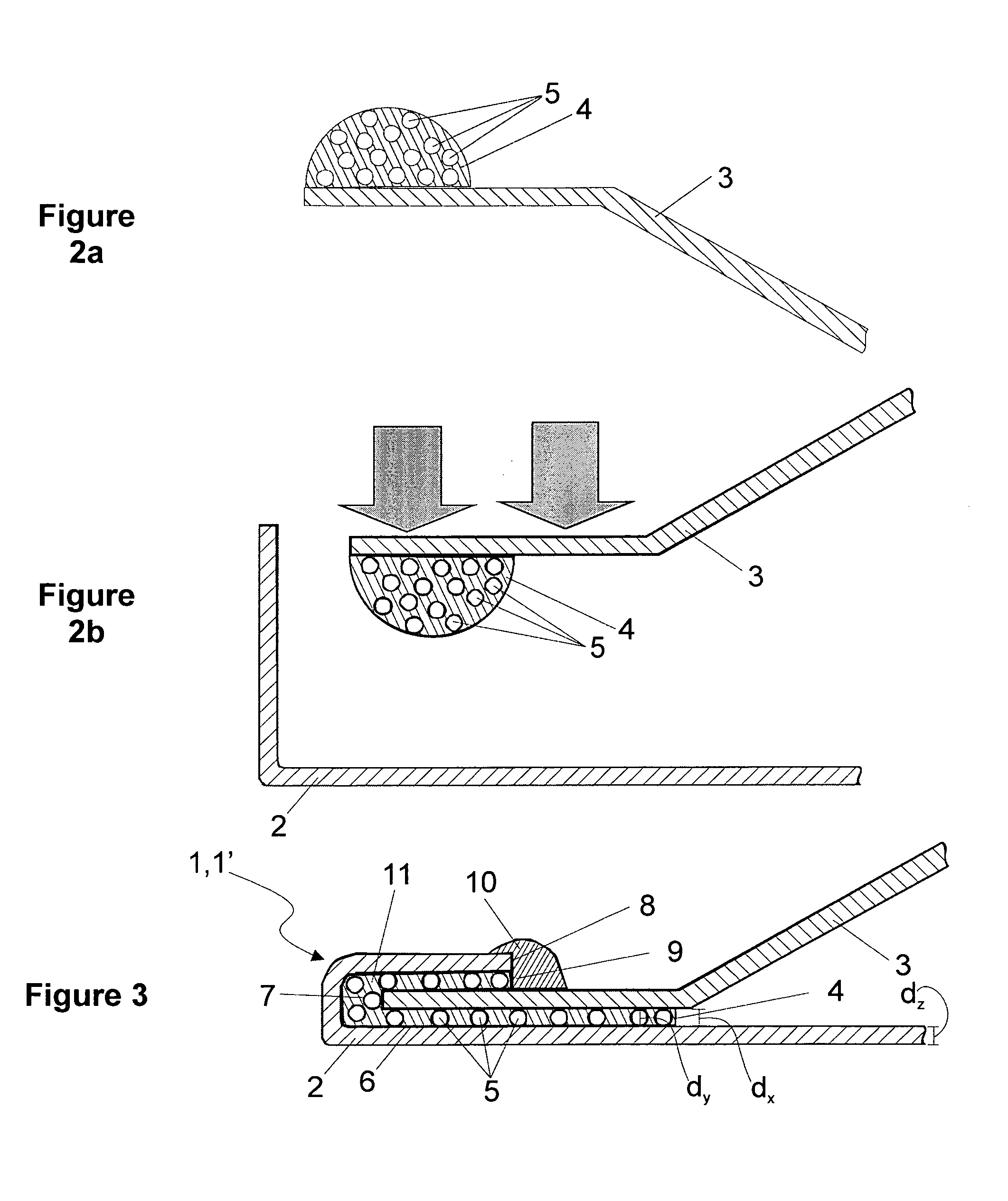Hem flange joint
a technology of hem flange and adhesive bonding, which is applied in the direction of adhesive types, transportation and packaging, chemistry apparatus and processes, etc., can solve the problems of significant distortion of components, corrosion of components in these cavities, and the inability to completely fill the hem flange with adhesive, so as to prevent or prevent the formation of bubbles
- Summary
- Abstract
- Description
- Claims
- Application Information
AI Technical Summary
Benefits of technology
Problems solved by technology
Method used
Image
Examples
Embodiment Construction
[0242]SikaPower®-496 / 3 is a heat-curing one-component epoxy resin adhesive commercially available from Sika Automotive GmbH. This adhesive designated K1 has a viscosity of approx. 2700 Pas at 25° C. and of approx. 100 Pas at 60° C.
[0243]The viscosity was measured by oscillographic methods by means of a rheometer with a heatable plate (CVO 120 HR, from Bohlin) (gap 1000 μm, cone-plate diameter: 25 mm (plate / plate), deformation 0.01 at 5 Hz, temperature: 20° C.-70° C., heating rate 10° C. / min).
[0244]A further heat-curing one-component epoxy resin adhesive was produced by adding to SikaPower®-496 / 3 2% by volume of glass spheres of diameter 0.25 mm with stirring and subsequent evacuation. This adhesive designated K2 has a viscosity of approx. 2800 Pas at 25° C. and of approx. 104 Pas at 60° C.
[0245]SikaPower®-490B3 designated R1 constitutes a comparative adhesive which is commercially available from Sika Automotive GmbH and is likewise a heat-curing one-component epoxy resin adhesive. I...
PUM
| Property | Measurement | Unit |
|---|---|---|
| viscosity | aaaaa | aaaaa |
| temperature | aaaaa | aaaaa |
| molecular weight | aaaaa | aaaaa |
Abstract
Description
Claims
Application Information
 Login to View More
Login to View More - R&D
- Intellectual Property
- Life Sciences
- Materials
- Tech Scout
- Unparalleled Data Quality
- Higher Quality Content
- 60% Fewer Hallucinations
Browse by: Latest US Patents, China's latest patents, Technical Efficacy Thesaurus, Application Domain, Technology Topic, Popular Technical Reports.
© 2025 PatSnap. All rights reserved.Legal|Privacy policy|Modern Slavery Act Transparency Statement|Sitemap|About US| Contact US: help@patsnap.com



